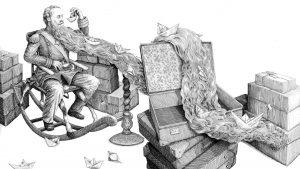Besides delineating contours, lines can also be used in order to provide the values of chiaroscuro (light and shade) in a sketch. This goal can be achieved through hatching. This is a basic technique as well as one of the most precious tools available. It doesn’t ground itself on a casual layout of lines, but rather in a precise operation that is composed by parallel strokes side by side, and that can intersect themselves on different directions or in a regular way. An intersection of hundreds of thin lines leads to the creation of richly variegated hues.
Objectives
The aim of the course is to teach and to provide to the trainee with the necessary tools for an in-depth study and knowledge of the communicative and expressive characteristics of hatching and its applications, thus acquiring a great control of the style and the language so to be able to apply it on an illustration in the future.
Program
The line:
Study of the hatching technique from the ancient Egypt until today.
First exercises with various types of pen.
Various exercises will be realized for the correct execution of the technique and the correct use of the tools to realize it.
Method of drawing up with nib and stroke-pen:
-lines;
-curves;
-retinato;
-dotted;
-modelled;
-shaped;
-nuanced;
-scribbled;
-decorative.
Study of textures and treatment of the materials.
Study of values and tones.
Study of shades and light.
Basic principles of perspective and composition.
Hatching on the scratchboarding.
Hatching on the etching.
Target audience
Illustrators, teachers of every order and degree, educators.
Final work
Realization of a publishing project (cover for a book) through all of its passages: sketching, study of the composition and legibility of the images, etc.





